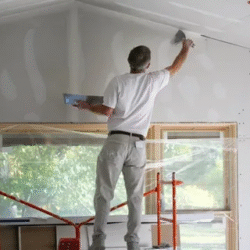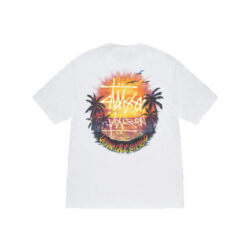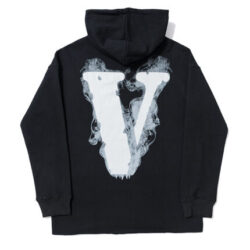Why Does Innovation Matter in Packaging Design?
It is important to understand that packaging design now defines brand value more than product features. Customers form first impressions based on appearance, texture, and functionality.
Modern custom design boxes represent the visual voice of brands. Each innovation in structure, sustainability, and technology changes how customers perceive and interact with packaging.
A study by Statista confirms that 74% of customers judge product quality based on packaging design. The trend shows that innovation directly influences sales performance.
How Is Sustainability Reshaping Custom Packaging?
Sustainability continues to dominate every packaging discussion. Businesses seek materials that protect the environment and preserve brand image simultaneously.
Recycled cardboard, biodegradable coatings, and soy-based inks replace non-recyclable plastics. Companies adopt minimal structures to reduce waste during production.
McKinsey reports that 60% of consumers prefer eco-friendly packaging options, even when prices are higher. Sustainable custom design boxes build trust and reflect ethical commitment.
Why Are Smart Packaging Technologies Gaining Popularity?
Smart packaging integrates technology into physical design. QR codes, NFC tags, and augmented reality experiences create interaction between product and customer.
Brands use digital links to share product details, authenticity proofs, and usage guides. Customers engage beyond the shelf, forming stronger connections with brands.
According to Packaging Digest, the smart packaging market will exceed $42 billion by 2030. That figure highlights how digital innovation will redefine packaging communication.
How Does Minimalism Influence Modern Box Design?
Minimalism now represents elegance and clarity. Simple designs attract more attention than crowded visuals. A clean layout directs focus toward brand identity and quality.
Modern custom design boxes rely on neutral tones, clear typography, and smooth textures. Minimalist aesthetics support sustainability by using fewer resources.
Many premium brands, including Apple and Glossier, achieve luxury appeal through minimal design philosophy. Less visual noise creates more sophistication.
What Impact Does Personalization Have on Packaging Trends?
Personalization drives emotional engagement. Customers prefer brands that tailor experiences for them individually.
Digital printing technologies allow variable data printing, which means each box can feature unique text, graphics, or color variations. Personalized messages or seasonal greetings increase customer loyalty.
HP Research reveals that personalized packaging improves purchase intent by 30%. That statistic confirms how emotional connection drives repeat buying behavior.
How Are Bold Colors and Typography Defining Modern Packaging?
Color psychology continues to shape modern marketing. Brands experiment with bold shades and unique fonts to stand out on crowded shelves.
Vibrant contrasts attract attention instantly. Custom fonts and hand-drawn styles enhance authenticity. Consistency between color palette and brand tone maintains recognition.
A report by Color Marketing Group states that consistent color use increases brand recall by 80%. Strategic use of color in custom design boxes strengthens brand memory across digital and retail platforms.
Why Are Transparent and Window Boxes Becoming Trendy?
Transparency communicates honesty. Customers like to see the product before purchase. Window cutouts or partial visibility enhance trust.
Transparent packaging combines curiosity and confidence. It shows product quality while maintaining brand presentation.
A clear custom design box creates balance between protection and visibility, allowing brands to display authenticity effortlessly.
How Does Smart Printing Technology Improve Box Quality?
Printing innovation now defines precision and efficiency. Digital and offset printing achieve vibrant, durable colors with minimal waste.
Advanced printing enables spot UV, foil stamping, and textured finishes that add tactile value. Every detail matters when customers associate packaging quality with brand excellence.
Smithers research indicates that digital packaging printing grows at 13% annually due to customization demand. Improved print quality supports consistency across large production volumes.
Why Is Interactive Packaging Emerging as a Marketing Tool?
Interactive packaging invites customers to participate rather than observe. QR codes, hidden messages, or scratch-off panels increase curiosity.
When customers interact physically, they form deeper engagement. The experience becomes shareable across social media, creating organic marketing exposure.
Brands using interactive custom design boxes transform packaging into a storytelling medium. It extends product value beyond function.
How Does Multi-Functional Packaging Add Value?
Customers value functionality alongside design. Multi-purpose packaging serves secondary uses after unboxing.
A sturdy box can become a storage container or display piece. That practical reuse builds long-term visibility for the brand.
Eco-conscious customers appreciate designs that combine aesthetics and reusability. Functionality transforms packaging into part of everyday life.
What Role Does Texture Play in Modern Packaging Design?
Touch matters as much as sight. Texture adds depth and emotional appeal. Matte finishes create calm sophistication, while embossed logos communicate exclusivity.
Customers connect sensory experience to perceived product value. A soft-touch coating feels premium and memorable.
Studies show that 70% of customers recall tactile packaging experiences more vividly than visual ones. Texture transforms packaging from container to emotion.
How Is E-Commerce Influencing Box Design Innovation?
E-commerce reshapes packaging needs entirely. Boxes must protect during transit while maintaining unboxing appeal.
Brands now design durable yet visually appealing mailer boxes that reflect their identity upon delivery. Compact structures reduce shipping costs and waste.
An eMarketer report found that unboxing videos on YouTube receive over 20 billion yearly views. E-commerce packaging now doubles as digital advertising.
Why Does Storytelling Dominate Modern Design Philosophy?
Customers buy stories, not objects. Packaging works as the first storytelling platform. Illustrations, icons, and patterns reveal brand purpose instantly.
Brands use custom design boxes to express values, heritage, and creativity. Storytelling connects emotion to identity, encouraging long-term loyalty.
Visual stories make products relatable. A strong narrative sustains engagement beyond initial purchase.
How Are Brands Using AI and Data to Design Better Boxes?
Artificial intelligence helps designers predict customer preferences accurately. Data-driven design systems analyze color trends, demographics, and purchase history.
AI-based mockups allow real-time visualization of new packaging ideas before printing. That technology saves time and minimizes design errors.
Deloitte Insights projects that AI-driven packaging design will grow 25% by 2028 due to efficiency and customization advantages.
Why Does Collaboration Between Brands and Designers Define Future Success?
Collaboration ensures originality. Brands work closely with creative agencies and packaging engineers to develop functional beauty.
Cross-disciplinary teamwork integrates sustainability, technology, and marketing goals. Each professional brings a unique perspective to the design process.
Such partnerships produce forward-thinking custom design boxes that meet evolving consumer expectations.
How Will Future Trends Shape Customer Experience?
Future packaging will merge physical and digital experiences seamlessly. Smart sensors, eco-materials, and customizable prints will become standard.
Brands that embrace innovation will create meaningful unboxing experiences. Those experiences generate emotional satisfaction and brand loyalty simultaneously.
The future of custom design boxes lies in adaptability. Design will evolve alongside technology and consciousness.
Final Thoughts
The packaging industry stands on the edge of creative transformation. Custom design boxes no longer serve as mere containers. They act as communicators, storytellers, and sustainability symbols.
Innovation, personalization, and eco-awareness define the next chapter. Brands that adopt those trends early secure stronger recognition and loyalty.
The future belongs to packaging that feels personal, intelligent, and responsible. Design now shapes not only how products look but also how customers believe.




